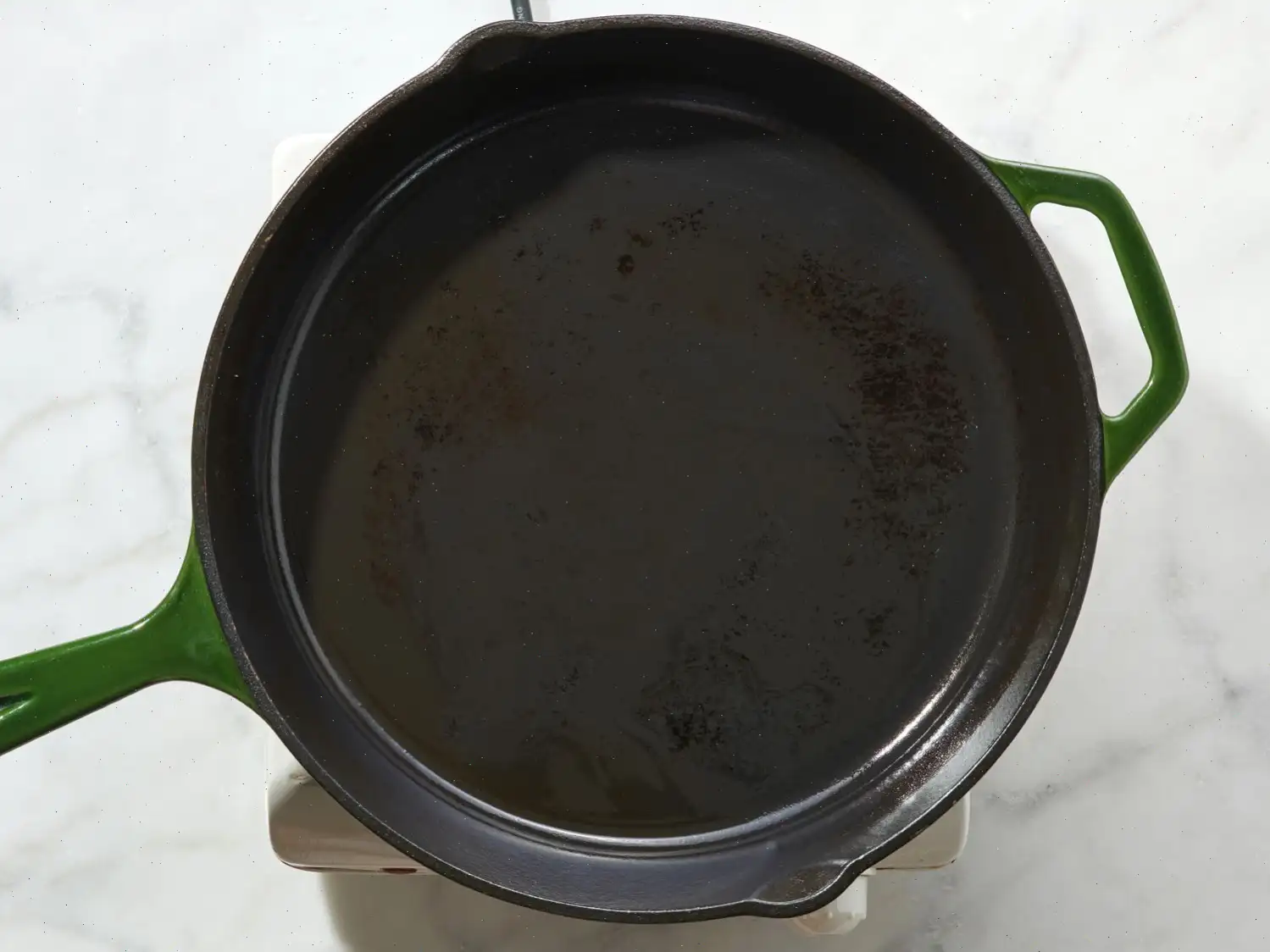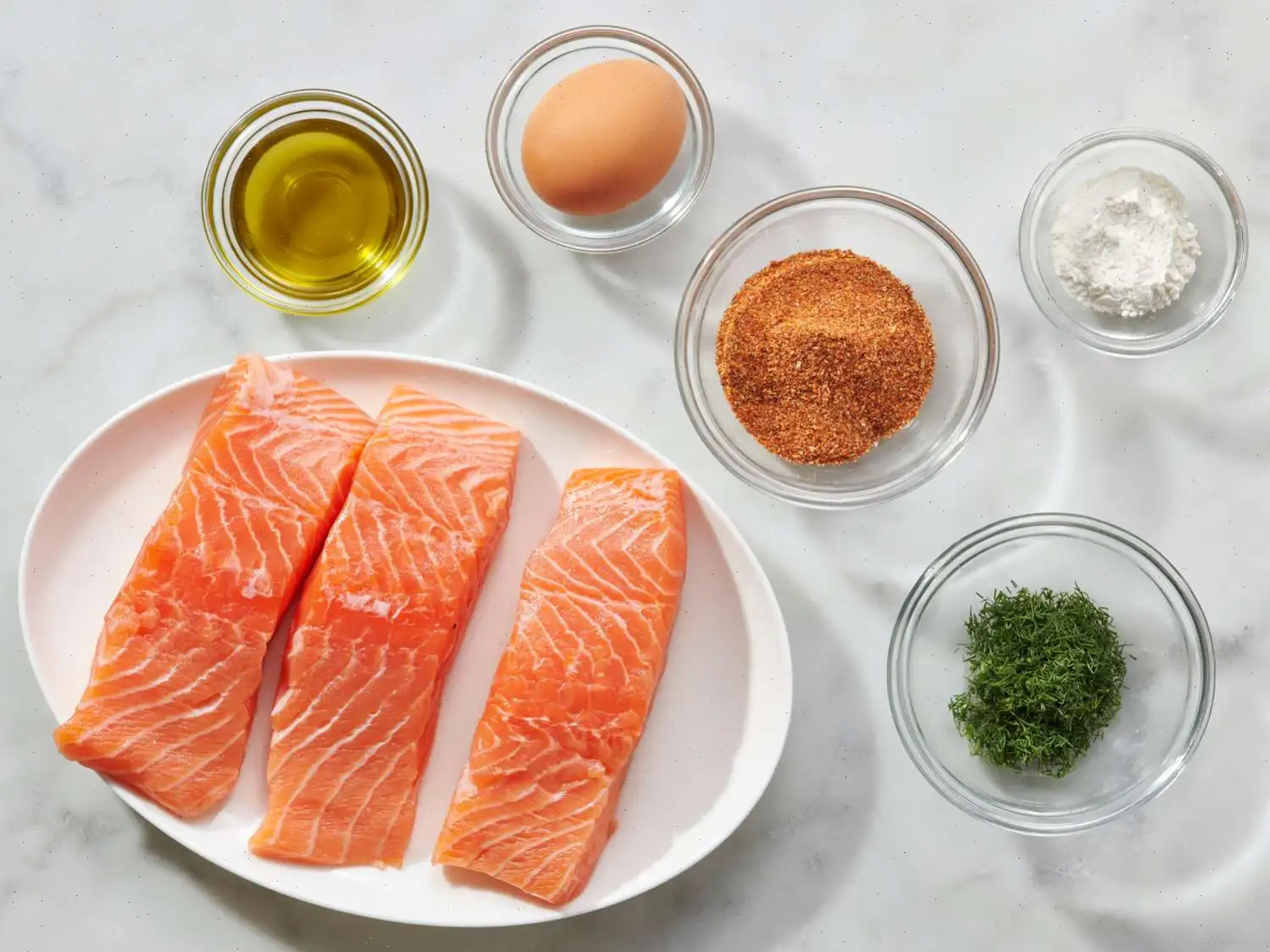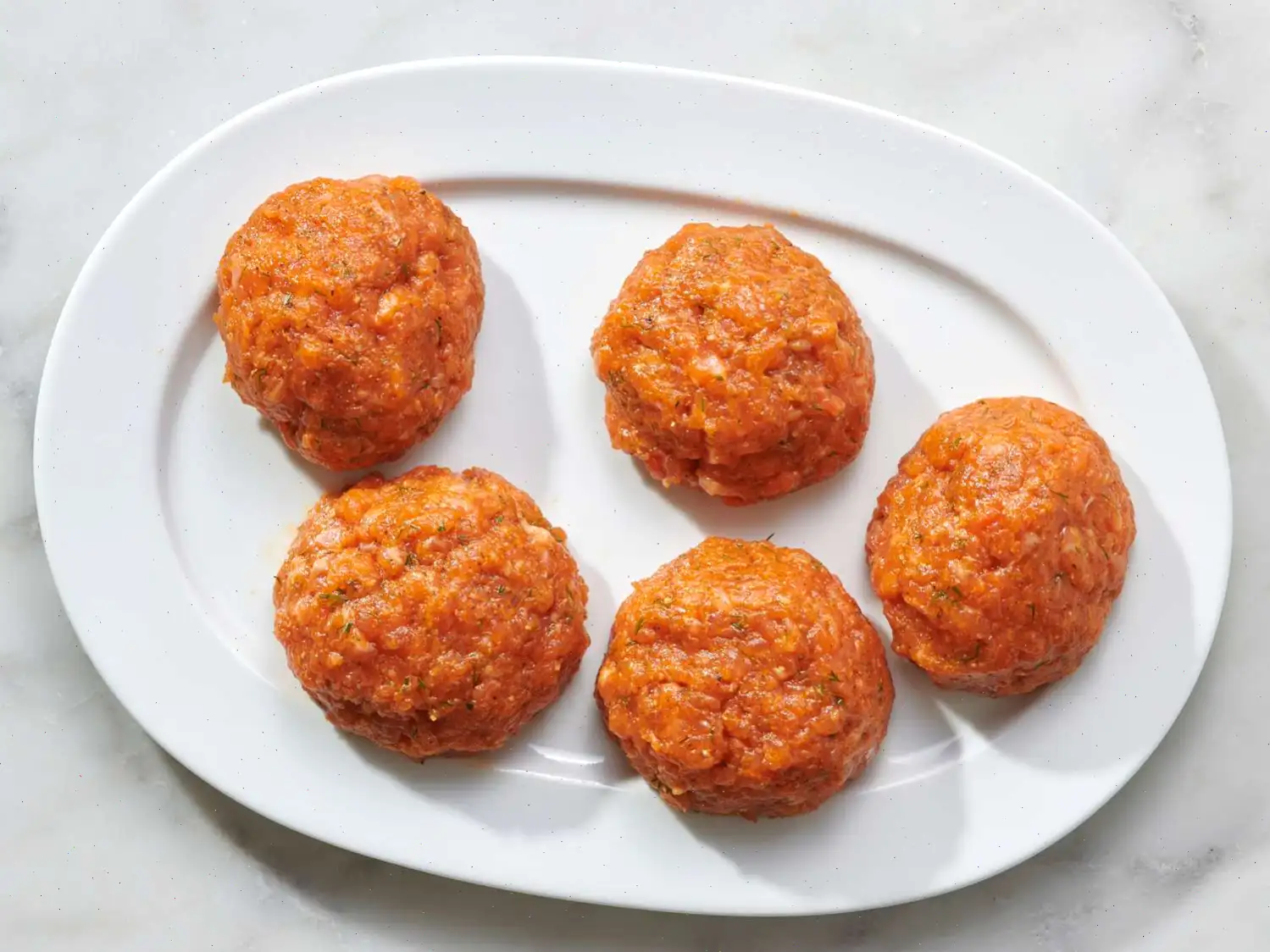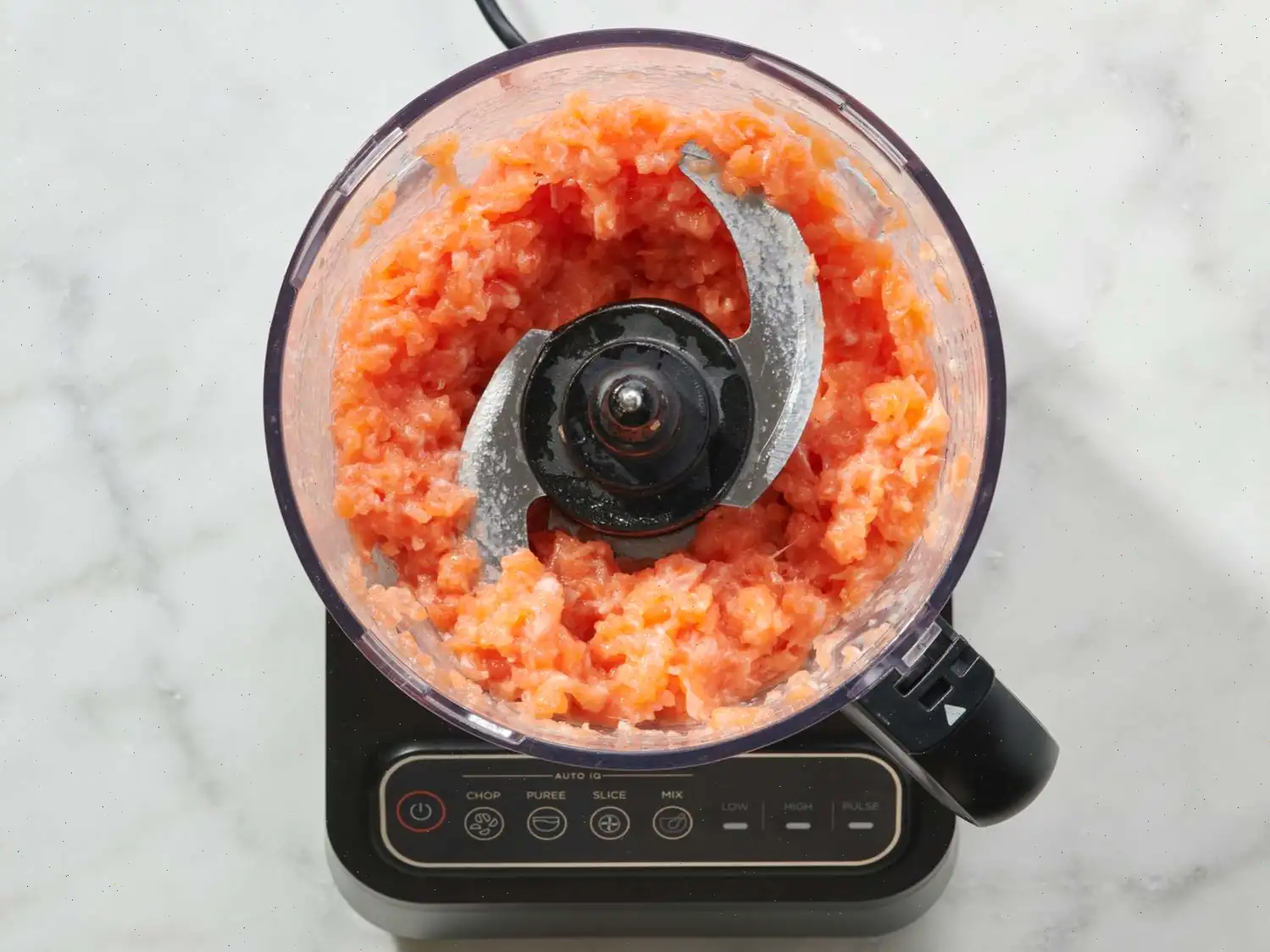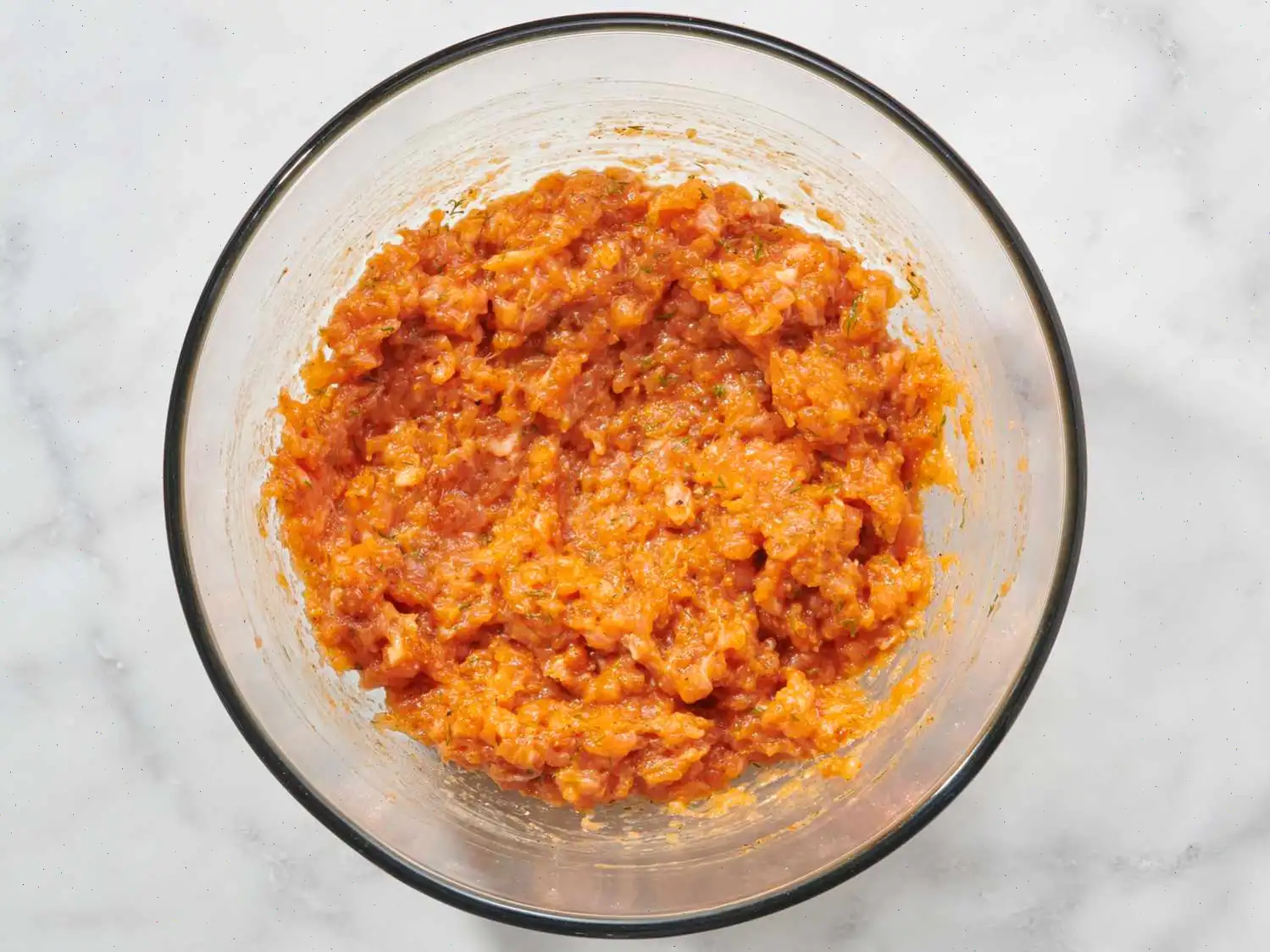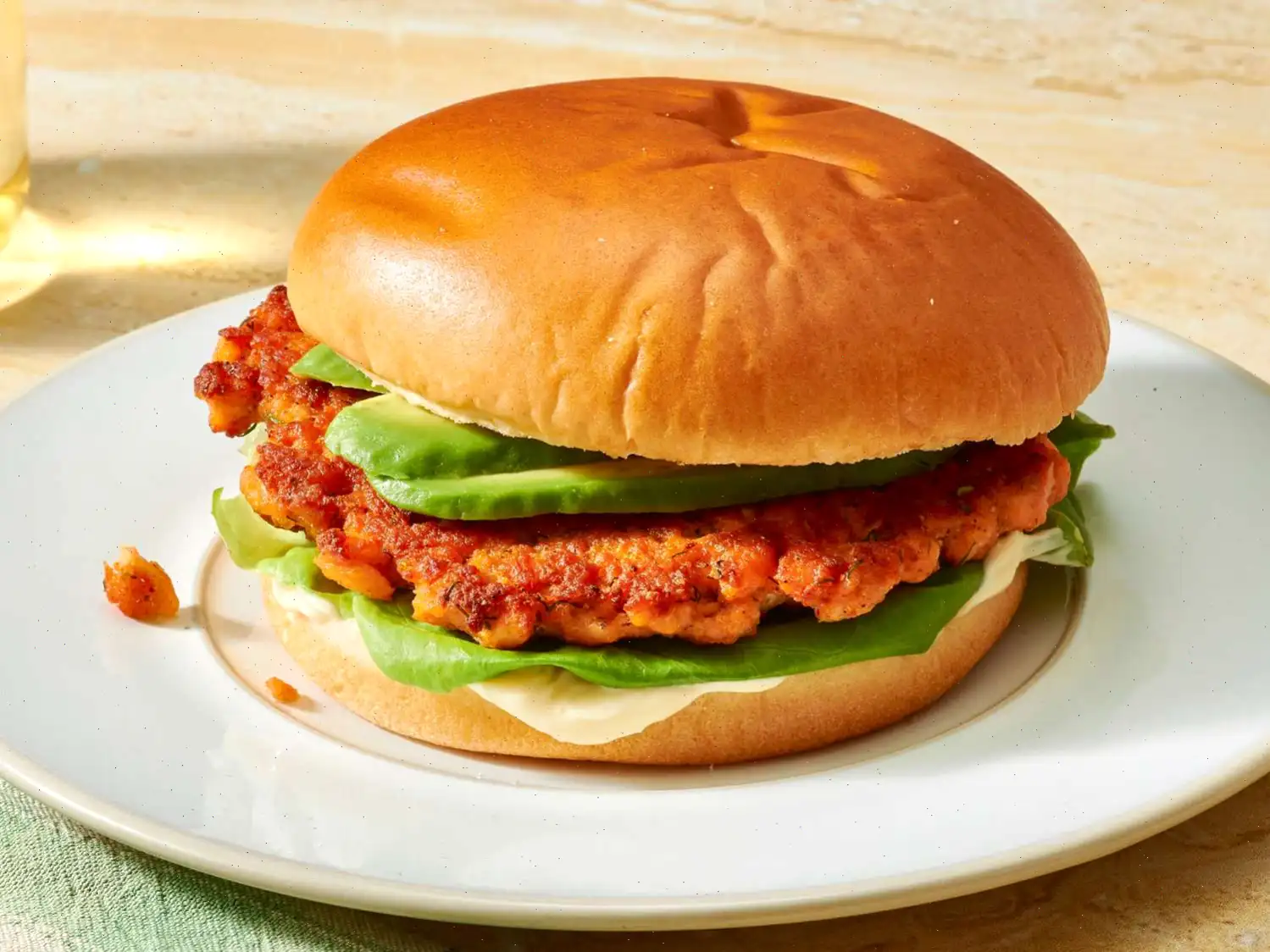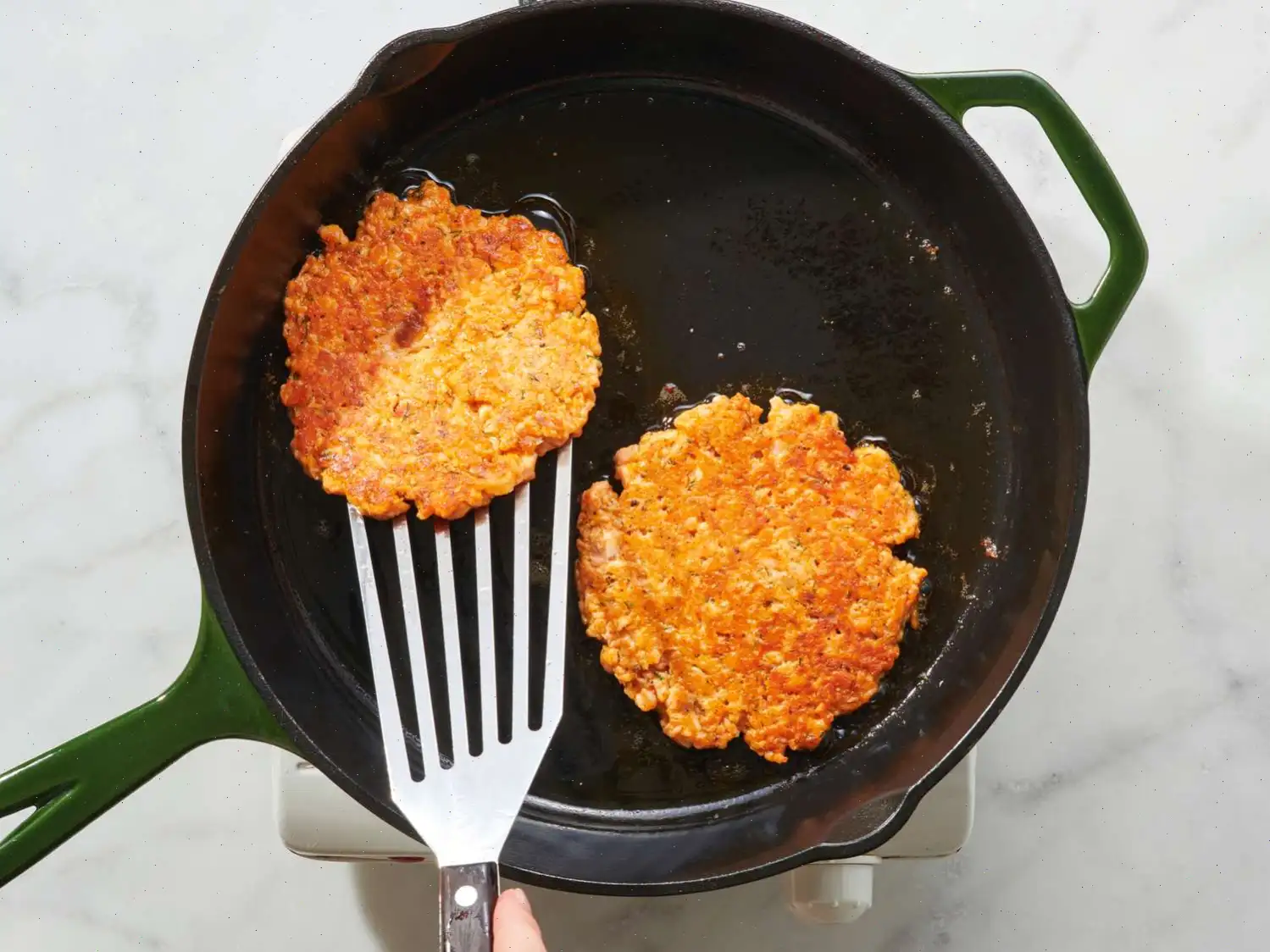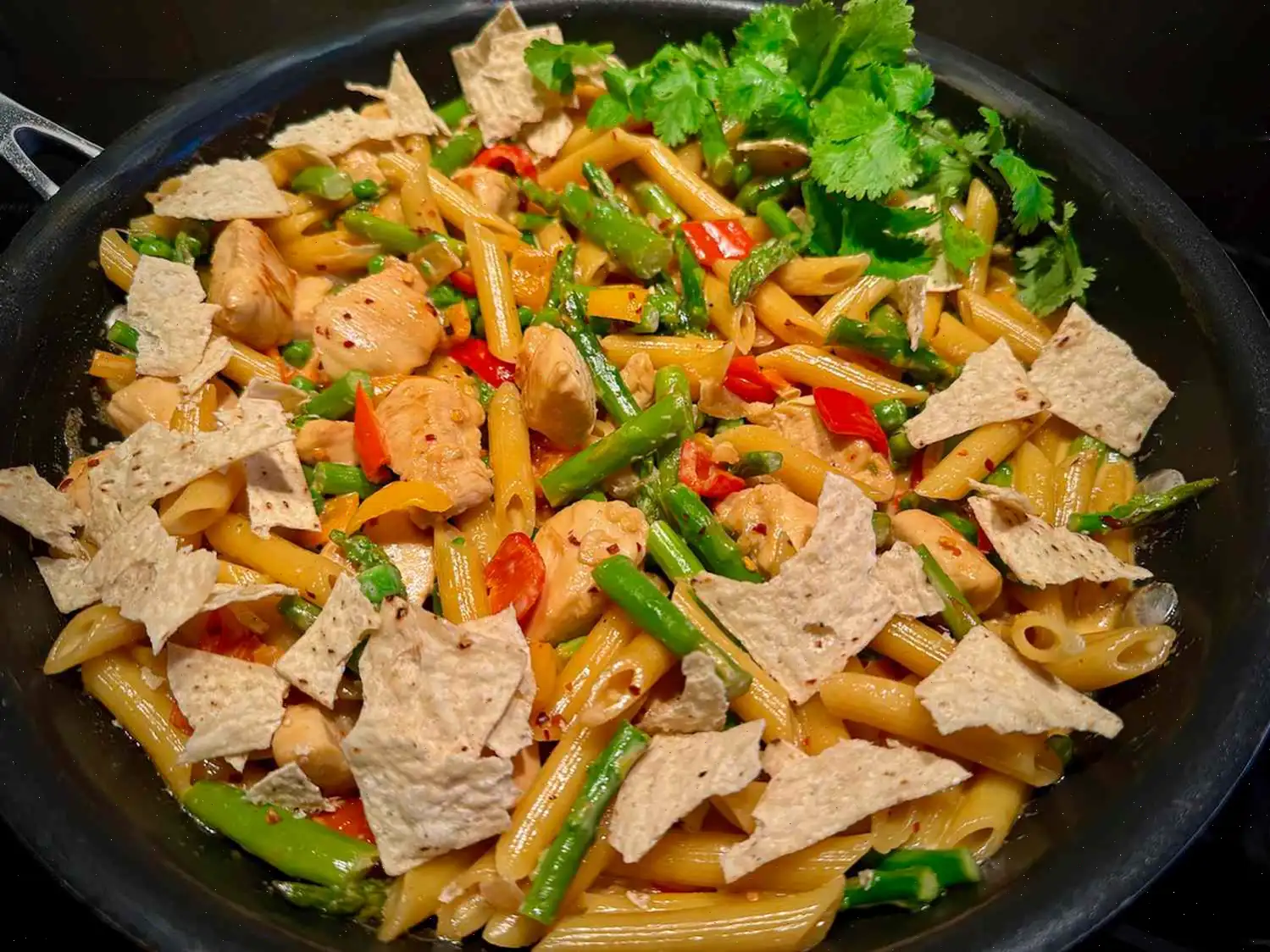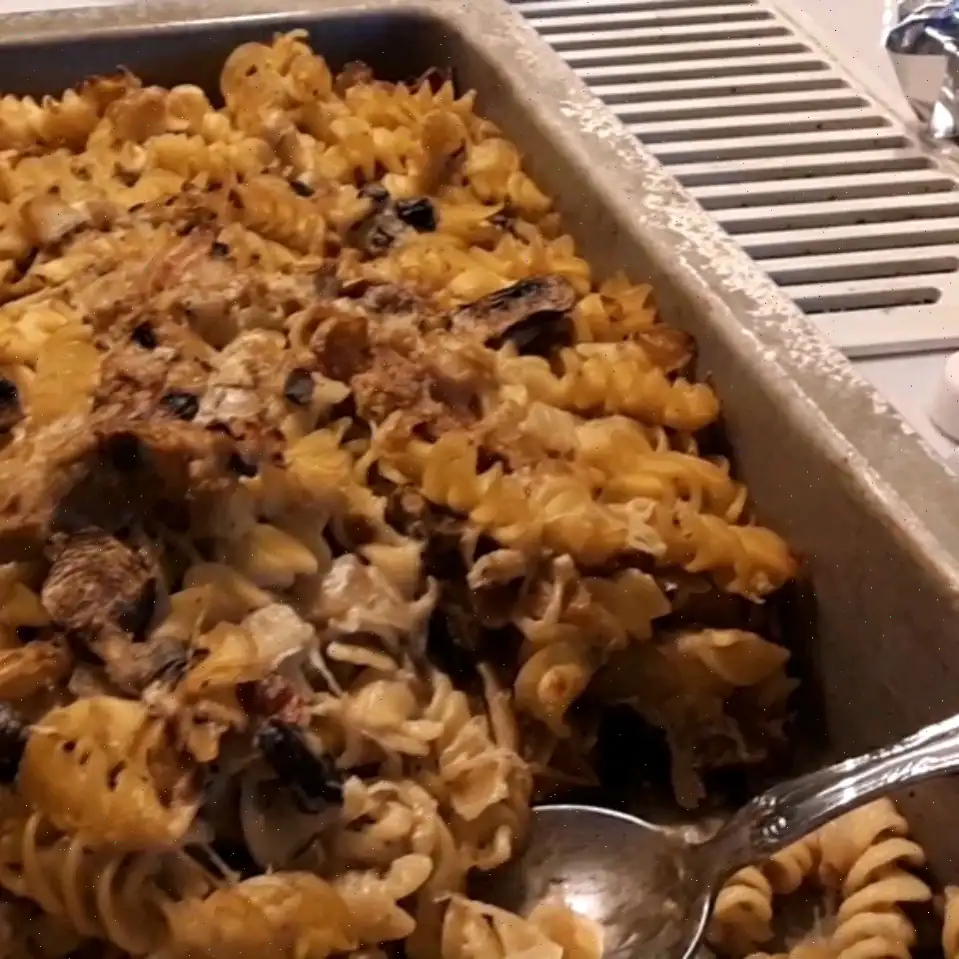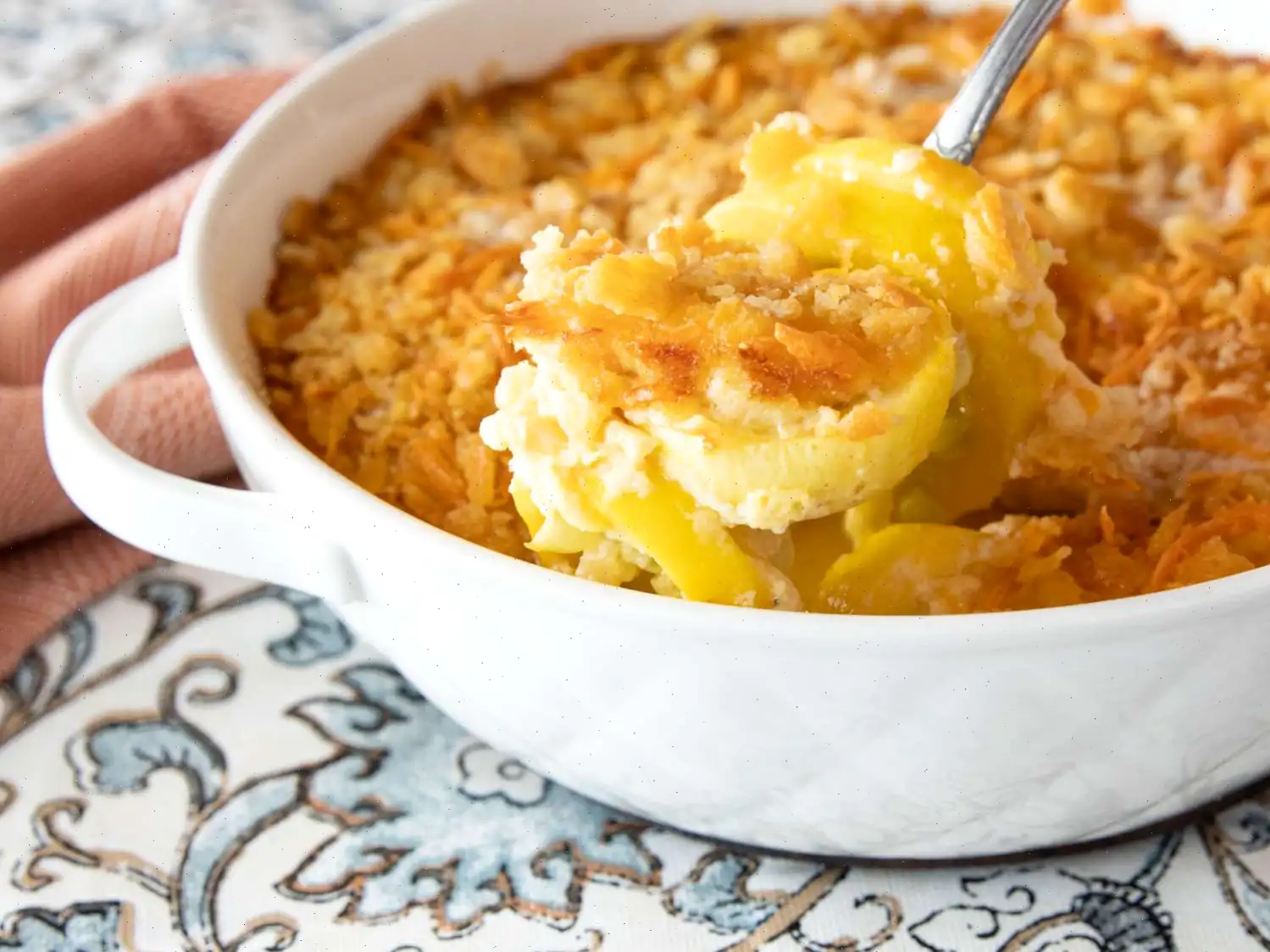
Salmon Smash Burgers Recipe
Ingredients
- 1 1/2 pounds fresh salmon filets, skin removed
- 1 large egg, beaten
- 1 tablespoon all-purpose flour
- 1 tablespoon chopped fresh dill
- 1 (1 ounce) packet McCormick Burger Business by Tabitha Brown Seasoning Mix
- 1 tablespoon grapeseed oil, plus more as needed
Directions
- Start by gathering all your ingredients.
- Chop the salmon into small pieces or pulse it a few times in a food processor until finely chopped.
- In a mixing bowl, combine the chopped salmon, beaten egg, flour, dill, and burger seasoning. Mix everything together gently until well combined.
- Take about 1 cup of the mixture and form it into a ball. Repeat this process to create 4 to 5 salmon balls.
- Heat 1 tablespoon of grapeseed oil in a large cast iron skillet or griddle over medium-high heat.
- Carefully place the salmon balls in the skillet, ensuring there is enough space to smash them flat.
- Using a burger press or spatula, press each salmon ball into a thin layer. You may need to work in batches depending on the size of your skillet.
- Cook each patty for 2 to 3 minutes per side, until golden brown and cooked through.
- Once cooked, serve the salmon patties in burger buns with your favorite toppings.
Nutrition Facts (per serving)
- Calories: 432
- Fat: 28g
- Carbs: 6g
- Protein: 37g
Nutrition Breakdown
| Component | Amount | % Daily Value |
|---|---|---|
| Total Fat | 28g | 36% |
| Saturated Fat | 6g | 30% |
| Cholesterol | 140mg | 47% |
| Sodium | 122mg | 5% |
| Total Carbohydrate | 6g | 2% |
| Dietary Fiber | 2g | 6% |
| Total Sugars | 0g | - |
| Protein | 37g | 75% |
| Vitamin C | 9mg | 10% |
| Calcium | 80mg | 6% |
| Iron | 3mg | 17% |
| Potassium | 728mg | 15% |
* Percent Daily Values are based on a 2,000 calorie diet.

The Story Behind Salmon Smash Burgers
Salmon smash burgers are a modern twist on the traditional American burger, emerging from the growing popularity of seafood as a healthy alternative to red meat. Unlike classic beef burgers, which have been staples since the early 20th century, salmon burgers began gaining traction in coastal regions of the United States, particularly in the Pacific Northwest, where salmon fishing has a long history. The idea of "smashing" the patty comes from the culinary technique popularized in diners across the U.S., designed to create a crisp exterior while keeping the interior tender and juicy.
Regional Variations
While the base recipe uses fresh salmon, regional adaptations have incorporated locally available ingredients. In Alaska and British Columbia, wild-caught salmon is preferred for its robust flavor, whereas the Pacific Northwest often adds fresh herbs like dill or tarragon. Some East Coast versions mix salmon with Old Bay seasoning or serve it on a soft Kaiser roll. Even within American cuisine, subtle regional tweaks, such as using different types of buns, toppings, or spreads, highlight local culinary traditions and preferences.
How Salmon Smash Burgers Differ from Similar Dishes
Salmon smash burgers differ from other seafood burgers in texture and preparation. Unlike salmon patties or fish cakes, which are often dense and bound with breadcrumbs, these burgers are gently chopped and lightly mixed, resulting in a lighter, flakier texture. The smash technique sets them apart from conventional fish sandwiches by creating a caramelized crust that enhances flavor without overcooking the delicate fish. They also typically contain minimal fillers, allowing the salmon itself to shine.
Typical Places to Enjoy
These burgers are commonly served in casual dining establishments, gourmet burger joints, and seaside cafs. They are especially popular during summer months at outdoor food markets and festivals. Home cooks also appreciate them for their simplicity and quick preparation, making them ideal for backyard barbecues. While often enjoyed with classic burger toppings like lettuce, tomato, and aioli, many restaurants offer creative combinations, including avocado, pickled onions, or specialty sauces that complement the salmons natural flavor.
Interesting Facts
- The concept of smashing burgers originates from diners in the 1930s, who found pressing patties increased surface browning and flavor.
- Salmon is rich in omega-3 fatty acids, making these burgers a heart-healthy alternative to traditional beef burgers.
- Wild-caught salmon used in smash burgers has a more pronounced flavor and firmer texture compared to farm-raised varieties.
- Salmon smash burgers have recently gained popularity on social media for their visually appealing golden crust and gourmet presentation.
- Many chefs recommend using a cast iron skillet for optimal sear and flavor development, which enhances the unique smash texture.


